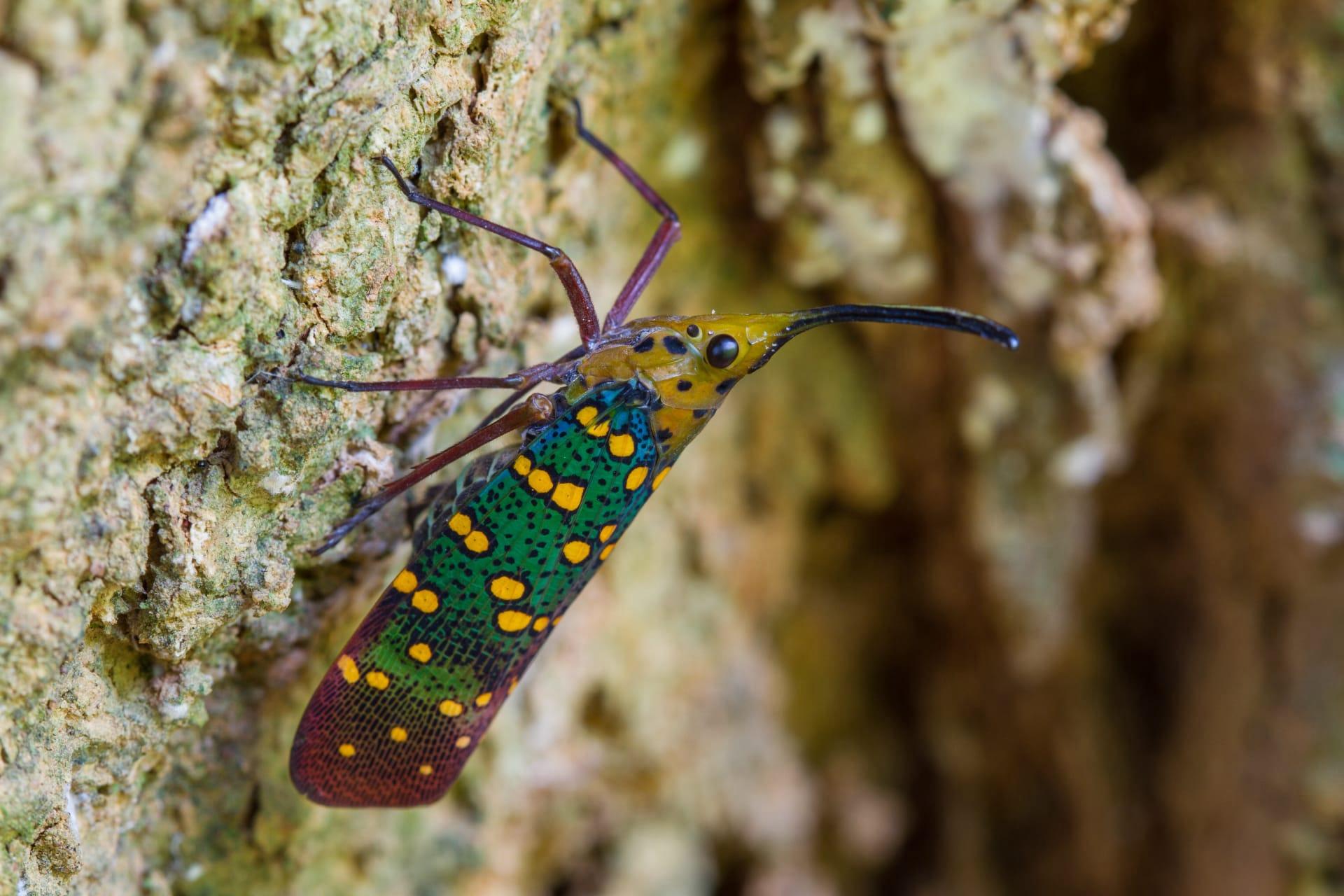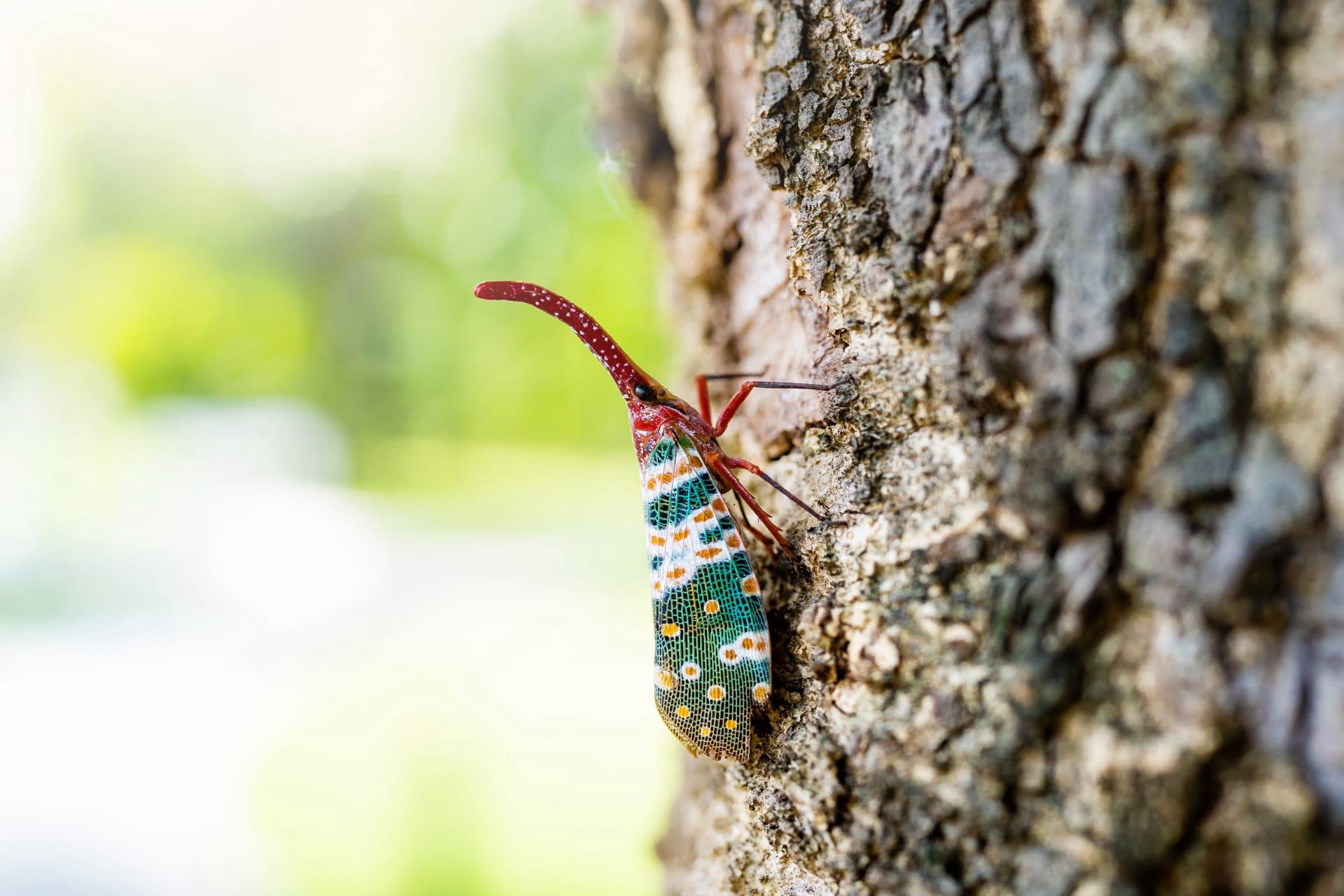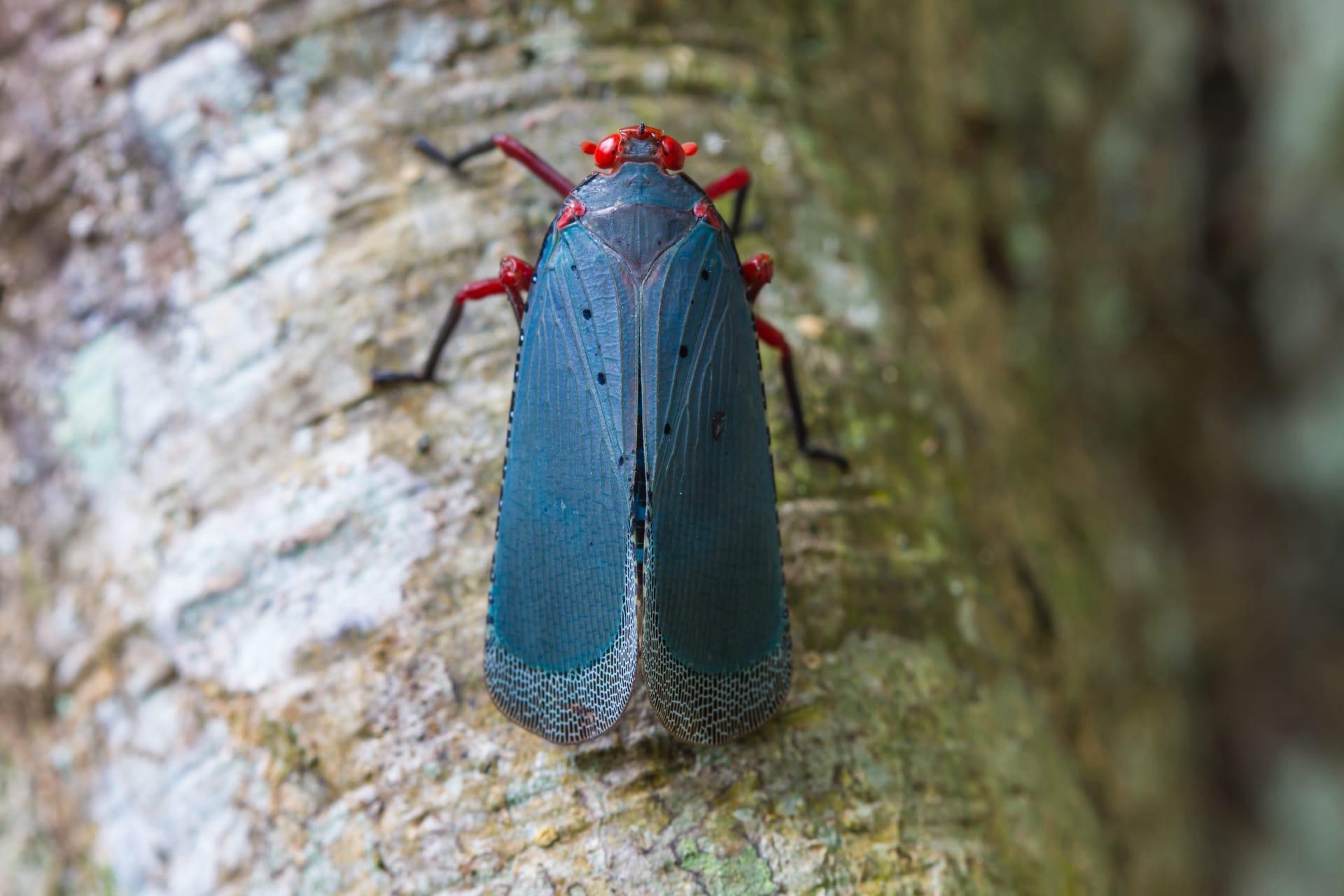Lanternflies
- Home /
- Mini Encyclopedia /
- Animal /
- Lanternflies
1
Lanternflies, scientifically known as Lycorma delicatula, belong to the family Fulgoridae in the order Hemiptera. This order, often referred to as "true bugs," includes other familiar insects like cicadas and aphids. The lanternfly, with its distinctive spotted wings and striking appearance, is a notable member of this group. Its classification places it within a lineage of insects known for their specialized mouthparts, designed for piercing and sucking.
Lanternflies are native to parts of China, India, and Vietnam. However, in recent years, they have spread to other regions, including the United States, where they were first detected in Pennsylvania in 2014. Since then, these insects have been observed in several states along the East Coast and as far west as Indiana. This spread is a concern for agricultural and ecological health, as lanternflies are known to feed on a wide range of plants, including grapes, hops, and hardwood trees.

2
Question: Do lanternflies pose a threat to human health?
Answer: A common misconception about lanternflies is that they are harmful to humans. In reality, these insects do not bite or sting people. Their primary threat lies in their impact on agriculture and the environment. Lanternflies feed on the sap of plants, which can weaken and potentially kill the plants. Their feeding also produces a sticky substance called honeydew, which can lead to the growth of sooty mold, further harming the plants and reducing crop yields.

3
Lanternflies have a unique survival strategy that involves a complex life cycle, encompassing several stages from egg to adult. They lay their eggs on various surfaces, including trees, rocks, and even outdoor furniture. These eggs overwinter and hatch in late spring, releasing nymphs that go through several instars, each with distinct coloration and patterns, before maturing into adults by late summer.
Another key to their survival is their polyphagous feeding habit. Lanternflies are not picky eaters; they feed on a wide variety of over 70 plant species. This adaptability in diet allows them to thrive in diverse environments. Their preference for the sap of economically important crops like grapevines, apple trees, and hardwoods poses significant challenges for agriculture and forestry industries.

4
In the ecosystem, lanternflies play a role as both prey and predator. As prey, they are a food source for various birds, insects, and mammals. However, their rapid population growth can disrupt local food chains. As predators, they feed on the sap of plants, affecting the health and growth of these plants. This can lead to reduced biodiversity, as some plants may become more susceptible to disease and environmental stress.
The presence of lanternflies also affects other species indirectly. For instance, the honeydew they produce encourages the growth of sooty mold, which can cover the leaves of plants, inhibiting photosynthesis. This not only harms the plants but can also affect the insects and animals that rely on these plants for food and habitat, leading to broader ecological consequences.

5
Film: "The Silent Invasion: The Lanternfly Crisis" is a documentary produced in the United States in 2021. It explores the rapid spread of lanternflies across the East Coast and the challenges faced by farmers and scientists in combating this invasive species. The film highlights the ecological and economic impact of the lanternfly infestation and the efforts to control its population.
Book: "Invasive Species: The Spread of Lanternflies" is a comprehensive book published in the United Kingdom in 2022. Written by entomologist Dr. Emily Richards, the book delves into the biology, behavior, and impact of lanternflies. It also discusses the various control methods and the importance of public awareness in managing this invasive species.
Book: "Ecosystems at Risk: Lanternflies and Beyond" is a Canadian publication from 2023, authored by ecologist Dr. John Peterson. This book focuses on the broader ecological implications of invasive species like the lanternfly. It provides insight into how these insects alter habitats, affect native species, and challenge conservation efforts, emphasizing the need for global cooperation in addressing invasive species.